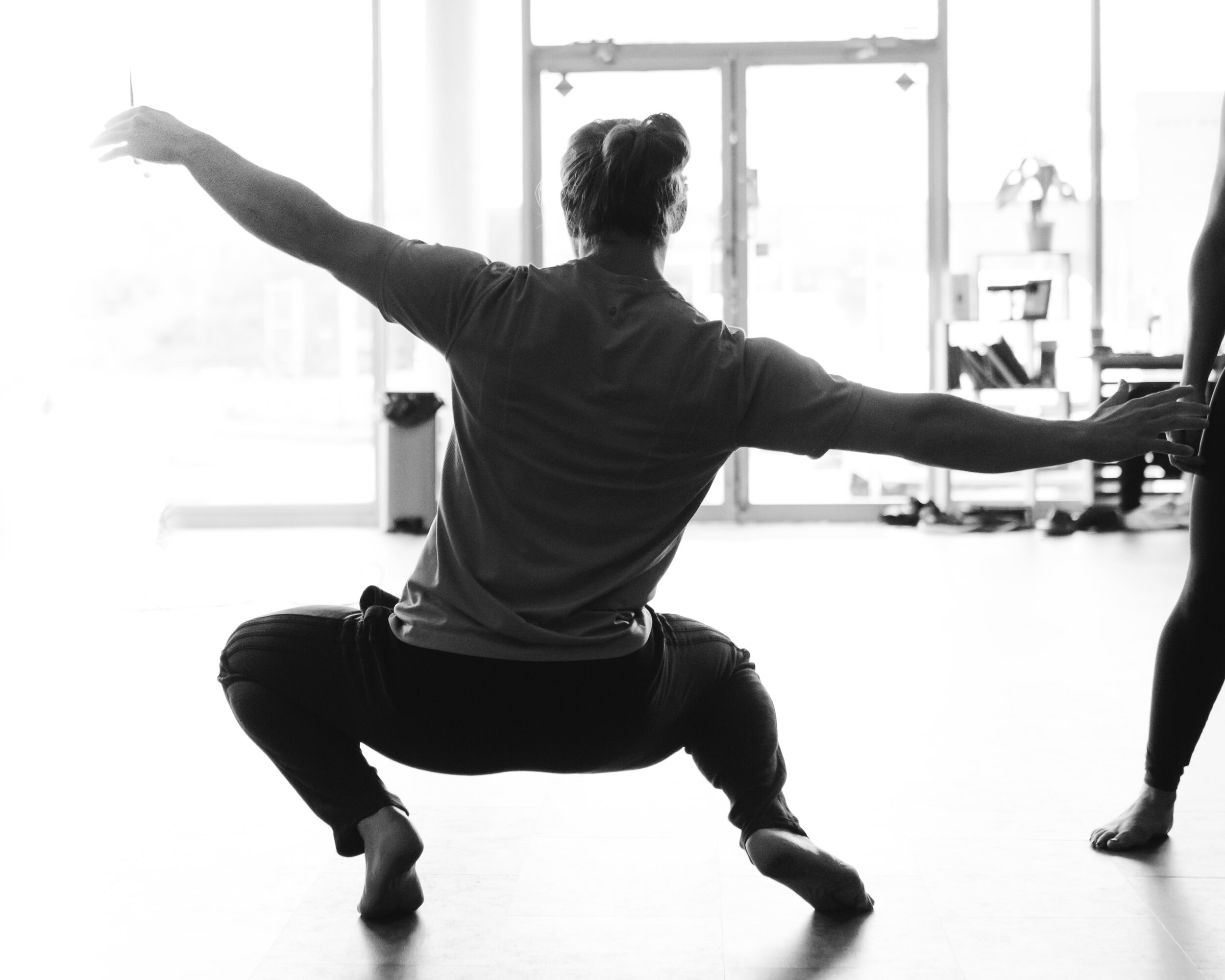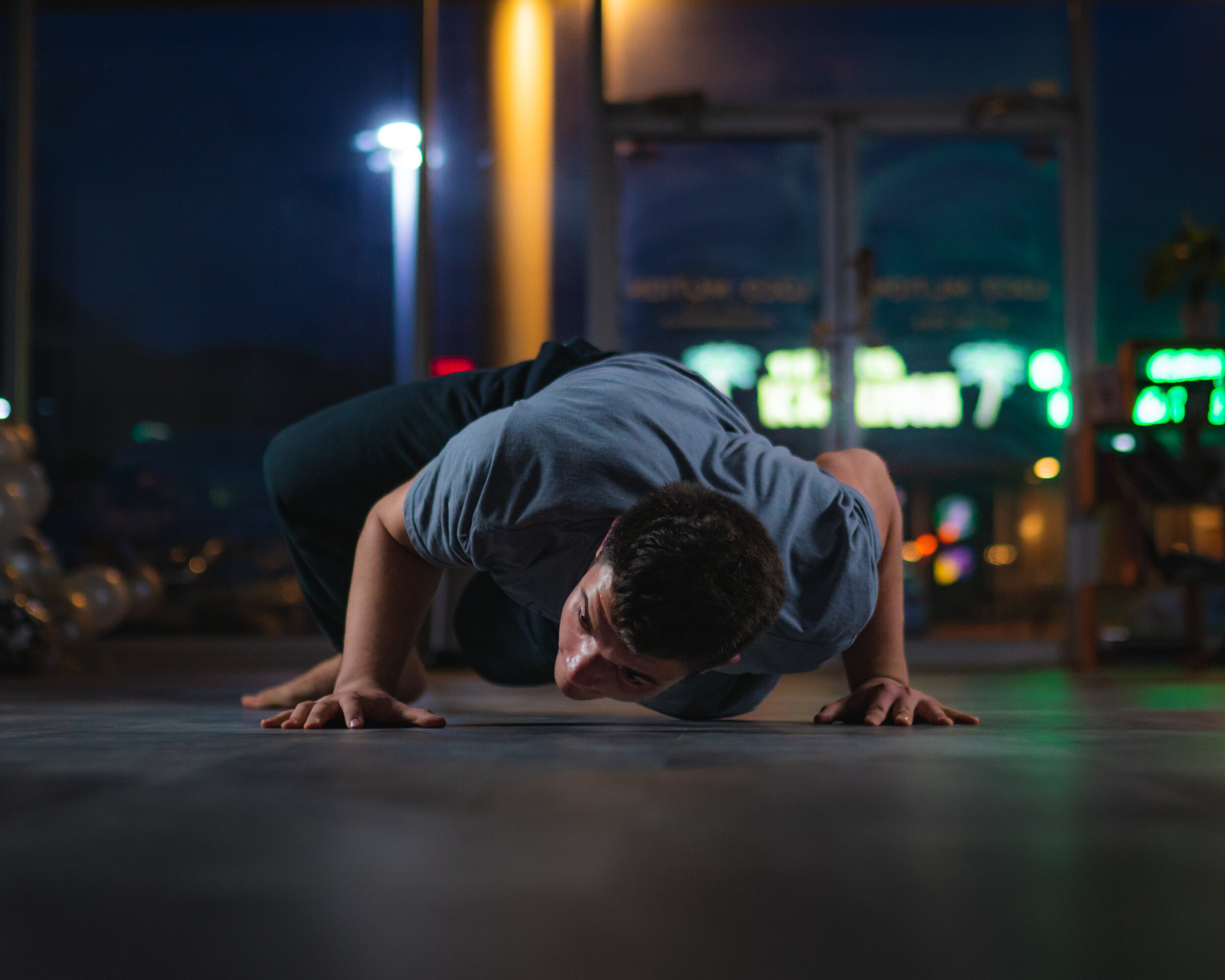Squatting outside the lines
Now, wait just a minute. Before you put me on trial like the witches of salem, hear me out.
My argument is not that Yoga does not develop range of motion, because it does.
My argument has actually little to do with the body, and more with the mind. Yoga in my practice, is a more internal practice. It involves the stillness practice, breath-work, organ massage, and more tools I have learned from my teacher at the last Movement camp, Dudi Malka.
Where my criticism lies with most particularly western yoga, is its inability to address rigid mental structures, and outside of the linear box development. I see this all the time in my classes, since we are dealing with movement and not simply range of motion. Yogis of all background have practiced with us, some with very poor range of motion, and some with great range of motion. Nearly all of these people have had this range more or less their entire life.
Regardless of their flexibility level, both groups moved just as poorly. Especially when patterns deviated from linear patterns, combined different planes of motion, or required you to use LESS flexibility but from MORE places.
Case in point – the lizard crawl.
Matt mid lizard crawl
The lizard crawl is a great tool for developing upper body strength, hip mobility, rotational capacity, conditioning, and more. Whenever I am working with someone coming from a yoga background, they immediately introduce patterns I did not show them, but rather patterns they bring in from yoga. Stepping through as if to warrior, keeping lines straight and jagged, trying to find ways to box the lizard in (when it really needs to be stretched laterally).
This is not a criticism on people, mind you. However, thanks to a well known mat referred to as simply “the yoga mat”, they are trapped in a confined space whether they like it or not. This metaphorical yoga mat also applies to their movement patterns later on. Remove the mat, sure, but you did not successfully remove the mental block of staying in your rectangle.
Once you are aware of it, then you have a CHOICE to stop doing it, or do it a different way, but until you can observe it, you are a slave to it.
These are just some thoughts to ponder so that you can become aware of some of the patterns which you are not even aware of. You cannot stop doing the thing you have no idea you are doing! Once you are aware of it, then you have a CHOICE to stop doing it, or do it a different way, but until you can observe it, you are a slave to it.
Take a look at one of my teachers from 2019 movement camp, Martin Kilvady, “Traveling through all asanas”. Observe his obvious flexibility, but also his ability to move in and out of these positions gracefully, while softening the edges and rounding the corners. He also exaggerates linear-ness and even improvises quite a bit, something you would never see or be encouraged to do in a yoga class.
More from the always interesting and original Mr. Kilvady
This is not to say I am not a fan of linear and well defined patterns, because they will serve us very well, but if we fail to realize the breadth of possible movements and variations, we will become just as fixed in the body as we are the mind.
Take this example from my good friend and teacher Jon Yuen.
“A lot of people want to *prepare for the unknown*, but few have the desire to enter it.
Without cultivating a foundational understanding as to how you can improvise/experiment (within a specific framework – doesn’t have to be “artsy”), the only thing you are left standing with is a limited movement repertoire that oftentimes makes flows look and feel both rigid and restricted. The practice produces a clear distinction between “moves, positions and transitions”, which is kinda the opposite of what most people want. Because it’s the opposite of flowing.
In my workshops, I try my best to promote that “a handstand is not a handstand” . It is an inversion, which basically consists of playing you center of mass over your hands/head so that the rest of your body can move freely. The same goes for other concepts, such as rolls, precisions, low gait/squats, tri- and quadpods (bridges and planks) and much more.
Once that has been established, it is time to “put yo’ bad self out there” and explore new moves.”
Jon Yuen
And another by Jon I quite like…
“A position = good.
Learning how to get in and out of a position = better.
Wool socks a la grandma = most bestest.”
Jon Yuen
So, don’t let my words hurt you too deeply, but I hope it brings an awareness to your practice that aims to strive beyond what you can currently see. I am not advocating anyone stop doing yoga, or that it is not beneficial but rather, we can do better!
Loosen up; move 😉
Kevin




I can both agree and disagree with the points you’ve made here. I agree that the westernized version of “yoga” has become horribly distorted. Most classes today cater to the demand for ‘more calories burned in less time.’ The people of Western society, as a whole, are too busy to care about how or WHY they are moving their bodies – they just want results (aka toned muscles and killer abs). The mental and spiritual component of yoga is often totally lost.
But in yoga’s defense, the typical class structure simply does not allow for such freedom and curiosity of movement. Traditionally, yoga was only taught one-on-one between student and teacher. The practice, therefore, was very individualized. This allowed for greater opportunity to explore new movement patterns and develop skills and knowledge more deeply.
But in today’s yoga classes, the teacher does not have the time or resources to fully assist each student individually. Because students usually do drop-in classes, the teacher also does not have the privilege of building upon a deeply involved lesson plan from week to week. Additionally, because most students do not pay attention to how or why they move, the teacher now has the added responsibility of ensuring that their students do not get hurt. As a result, a linear sequence of movements is instructed so as to reduce risk of injury.
Unfortunately, the typical yoga classroom is not always the best place to explore integration and improvisation. I don’t think yoga is to blame for this “rigid” or “inside the box” thinking, but more so modernized western culture is to blame. There are many great yoga teachers who are striving to achieve a higher sense of awareness and deeper spiritual connection within their communities, but it takes time. And it begins with the STUDENT being ready and willing to learn, first.
I definitely agree that awareness is key. Once the student understands that there is limitless opportunity beyond what they already know, they are ready to take the next step. But awareness comes first, as does isolation! So yoga is a wonderful place to start developing a specific vocabulary of isolated movements that can support the student as he/she further explores the movement potential of both body and mind.
This is a very well thought out response and I think nails the message I tried to make.
Is YOGA the problem? No, I do not believe so at all.
Without writing a full essay response I think we can sum up the points we agree on and can learn so much about how we do things from that.
The teacher has a responsibility from the start to uphold their values and seek only students who are asking the right questions. These students are worth in value 10x what the people who just want to burn some calories are worth. I should note burning calories is not an issue – its just an indicator of a poor relationship with your body/food if this is your MAIN focus for practicing.
Private/Small group is the best place for people to start, until they develop a true understanding and can be thrown into a melting pot of advanced students.
Isolating precedes integrating precedes improvisation – while all must be utilized throughout the process. I learned this from Ido Portal.
The western culture around yoga may be the issue, but the practice of yoga is an extremely rewarding and deep practice to explore with the right teacher and community; just like any practice!